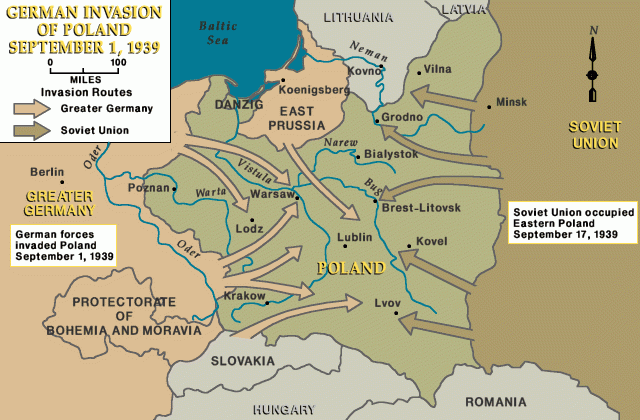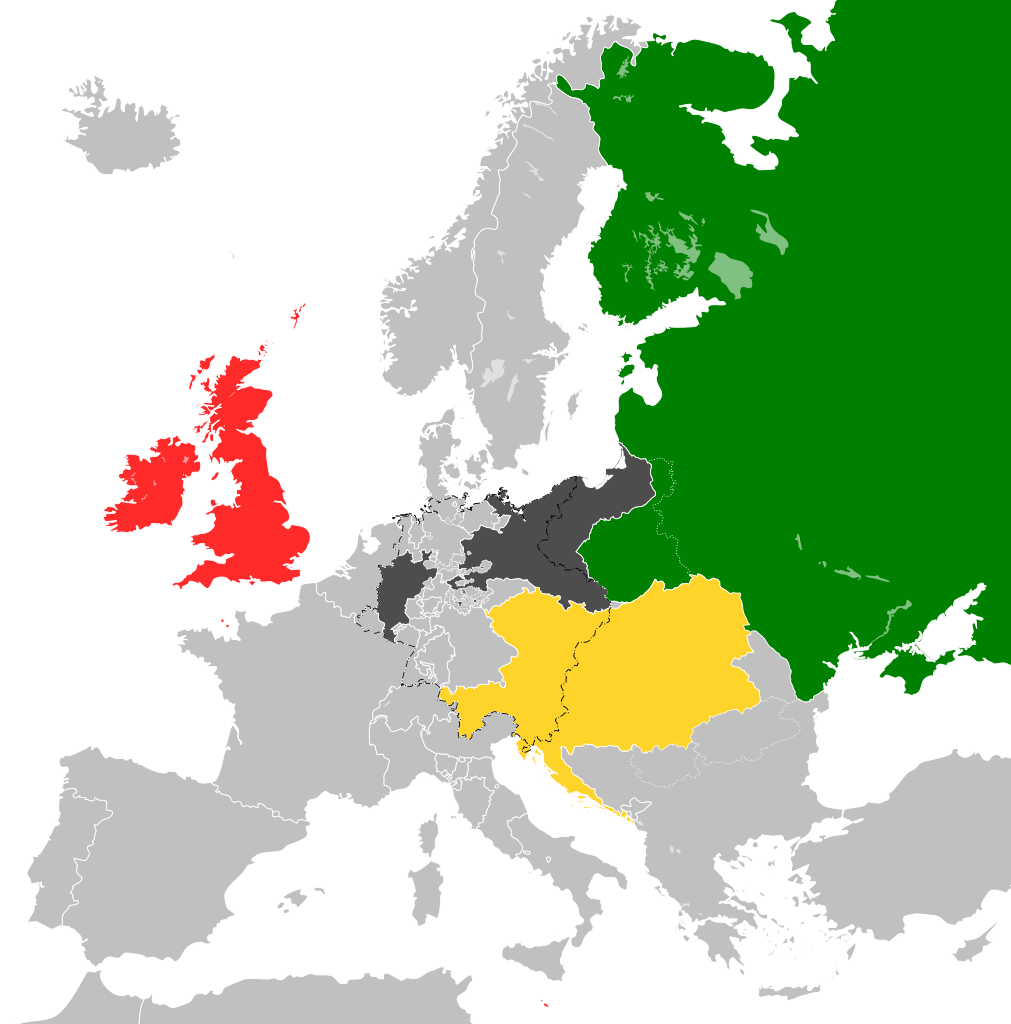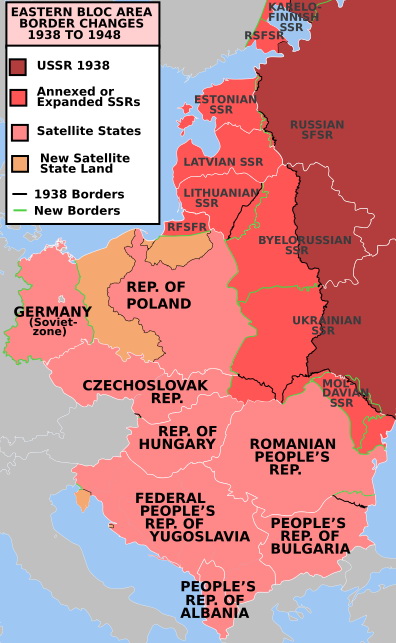The World Divided (1941)
The map below, published by Richard Edes Harrison for Fortune Magazine in 1941, shows the world divided amid World War II.
The map, with an obvious propaganda narrative, has some basic errors that are not fortuitous:
- It shows the Soviet Union in black, as part of the Axis. Even though the map has a small explanatory note that says “If Hitler can crush the Russian Army and set up a puppet government, this will constitute a direct territorial threat to the U.S.”, the Soviet Union had already broken the non-aggression pact with Nazi Germany at the time this was published map (August 1941).
- It shows the United States in red, even though they had not yet officially entered the war. This shows the intention to help the narrative that sought to pressure to intervene in the war on behalf of the allied forces.

The American cartographer uses different colors to group all the powers based on their alignment with the two existing sides:
Red: Territories against the Axis.
Red and yellow bars: Definitely anti-Axis neutrals.
Red with thin black lines: Potentially disruptive elements among Allies.
Yellow: Neutrals – mostly waiting to pick a winner.
Red with thick black lines: Potentially disruptive elements within Axis.
Yellow with black lines: Definitely pro-Axis neutrals.
Black: Axis.
The map contains the following text.
This is a map of a world struggle that will mark a turning point in civilization. The struggle divides the world into two huge camps: those who are for us (in various degrees) and those who are against us (likewise in various degrees). Between these extremes there are the neutrals, some leaning one way, some another. All these gradations are explained in the key on the opposite page.
Several important points regarding this map should be noted. The first is that the entire conflict pivots around the U.S. This is not due merely to the placing of the U.S. in the center of the spread: it lies, rather, in the very nature of the struggle. The U.S. is the pivot (a) because of its geographical position, which is central to the oceans; (b) because of its ideological position, which makes it the hope of all free peoples; and (c) because of its policy of supplying the enemies of the Axis with the materials of war, via the lend-lease lines.
Because the U.S. is pivotal, and because the U.S. has not yet taken military action, the map is political rather than strategical. Yet there are several strategical considerations:
A. The Western Hemisphere lies between the shores of the great land mass of the Eastern Hemisphere. If those shores were controlled by the enemy, the U.S. would find itself in the grip of a gigantic pincers. At present there are two bastions preventing this—and only two. One is Britain, fed by the big lend-lease line from the East Coast. The other is China, fed by a thinner lend-lease line to the Burma Road.
B. The enormous importance of the U.S.S.R. shows up on this map. If Hitler can crush the Russian Army and set up a puppet government, this will constitute a direct territorial threat to the U.S. The thin red line running from San Francisco around the polar cap to Archangel is quite academic as a lend-lease route, but it serves to show how close we are to that theatre of action. Air attack from this quarter is not beyond possibility. And if the Soviet Union were to fall, Hitler would be, mainland to mainland, within fifty-seven miles of U.S. territory across the Bering Strait.
As a result of its pivotal position the U.S. is fighting the war all over the world. It is intimately interested in the affairs of almost every nation outside the black area of the Axis. The lend-lease lines show the lines of major involvement, but there are also such problems as Eire, India, and the Union of South Africa. If Hitler won the Irish Government to his side the repercussions in the U.S. would be tremendous. The Union of South Africa is really on our side, but internally divided. And India, which Hitler may be able to reach through the U.S.S.R., wants freedom now. Finally, there is Latin America. We have sought in many ways to bind the Latin-Ameri-can countries to our cause—by dollar loans, by military missions, and by education and propaganda. The results so far have been anything but satisfactory.
Such is the world we face. Largely, it is the result of our own failure to be realistic in the past. Now we have to fix it. And our first move had better be to become realistic for the future.
Richard Edes Harrison
To learn more about the Second World War, have a look at the following atlases:








